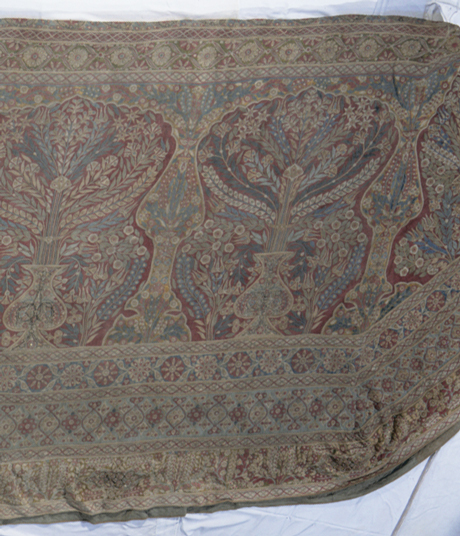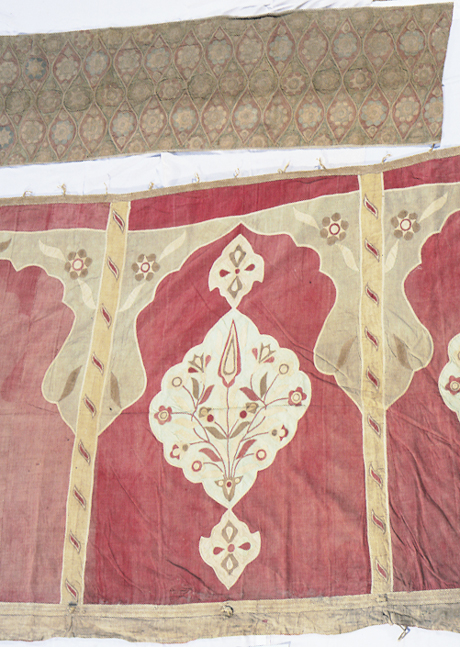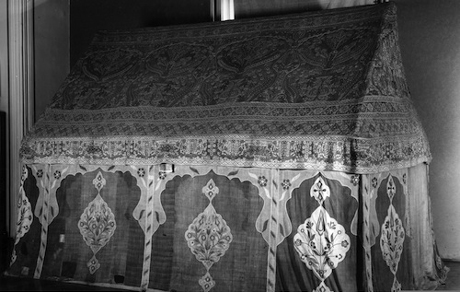Robes and Fabrics - Ottoman Tent
Appliqué technique with gilt leather
Size: 760x305x165 cm
Museum of Military History - Vienna
Inv. No. 4687
When conquering new lands, partly truly excessive tent encampments were characteristic of the Ottoman armies. While dignitaries along with the top-ranking and highest army officials would have an entire tent city at their disposal, the ordinary soldiers used to join with equals and form groups of 10-12 men per accommodation. The tents were not only weatherproof and of very high quality, but also easy to transport and simple to set up. Both, the troops’ tents and the accommodation of their commanders and military leaders used to show the emblem of their unit and/or ranks. Likewise, the equipment of a tent would reflect which rank its proprietor held.
The Ottoman troops are said to have left about 15.000 tents in Vienna in 1683, which were subsequently meant to be divided among the troops of Bavaria, Saxony, Poland, Baden-Württemberg and the Emperor. Only a very small share could be retained for documentation purposes though.
The Museum of Military History possesses one such tent consisting of three parts which could be preserved in their original condition. The tent walls had been divided into 12 segments, richly ornamented with floral patterns in appliqué technique. They stem from the Emperor’s collection, formerly exhibited at Arsenal (Zeughaus) in Vienna.



